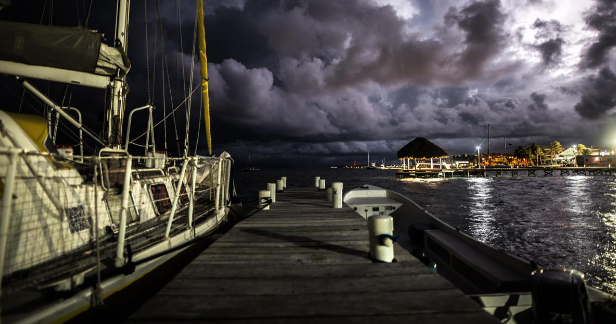Hurricane season is upon us, which means boat owners must brace themselves for the worst in case a storm hits. If the last several hurricane seasons are any indication, you can never be too prepared when it comes to protecting your boat from damage. Have a plan in place when a hurricane is imminent in your area to avoid costly or dangerous incidents.
There are far too many horror stories of boat owners believing they did all the necessary preparation before a storm, only to be left with a boat with a cracked hull or battered bulkheads.
In this blog, we cover several pointers to keep in mind when prepping your boat to withstand the onslaught of a hurricane.
Know Your Hurricane-Safe Marinas Well in Advance
No matter your area, you should always keep tabs on which marinas in your area are safest for storage during a hurricane. Marina safety can vary wildly, which means research and peer reviews will be your best friend in the summer months as you scout for safe havens.
Typically, marinas with floating docks will fare better than those with fixed docks. That said, a floating dock alone isn’t a guarantee of safety for your boat as you will also need to check if the pilings are high enough for safe storage. Short pilings will make your boat more susceptible to storm surges and result in massive damage to your vessel. If the pilings are shorter than the storm surge, your boat will float away.
Store Ashore on High Ground If Possible
If possible, it’s statistically safer to store your boat ashore on the high ground rather than leave it in the dock. You limit the effects of the storm surge so long as you don’t bring your boat ashore in a low-lying area. You can use jack stands and lines to help deter any damage from wind, which will likely still be a threat even after removing the boat from the dock. If you can store the boat in a warehouse or enclosed space, more power to you — this has the added benefit of protecting your boat from flying debris.
Replace Your Dock Linings
Using old or heavily used linings before a hurricane can be a recipe for disaster. They lose up to 75 percent of their strength more quickly than you might think. This is especially important if you must remain at a fixed dock, where the stress of the lines will be much greater than on a floating dock. Also make sure that your lines are made of the right material (i.e., nylon), that they’re of sufficient thickness, and are long enough to not break due to force.
Remove Anything Especially Vulnerable to Wind
If you have a boat canvas, enclosures, cockpit covers, or sails and sail covers, remove them and store them away. These are all especially vulnerable to wind and are likely to be destroyed in a hurricane, especially in a direct hit. Since your covers are removed, you will also want to take out any electronics and secure any instruments with duct tape or similar material. This step is important if only to protect the items you remove, even if your boat itself isn’t damaged.
Remain Alert
Always be aware of incoming storm systems and keep up with your storm tracker. Set up alerts on your phone or tablet, so you’re always prepared in case you’re in a hurricane’s path. By having a hurricane preparation plan in place before the season, you’ll be set so long as you put it into motion early enough.
Important Disclaimer: AERÉ cannot guarantee that boats will not incur any damage if the product is used during the event of a hurricane. No fender can guarantee to protect a docked vessel from a Category 3 storm or higher. However, feedback from customers that did use AERÉ fenders during Hurricane Irma responded with strongly positive messages stating no damage was found.









